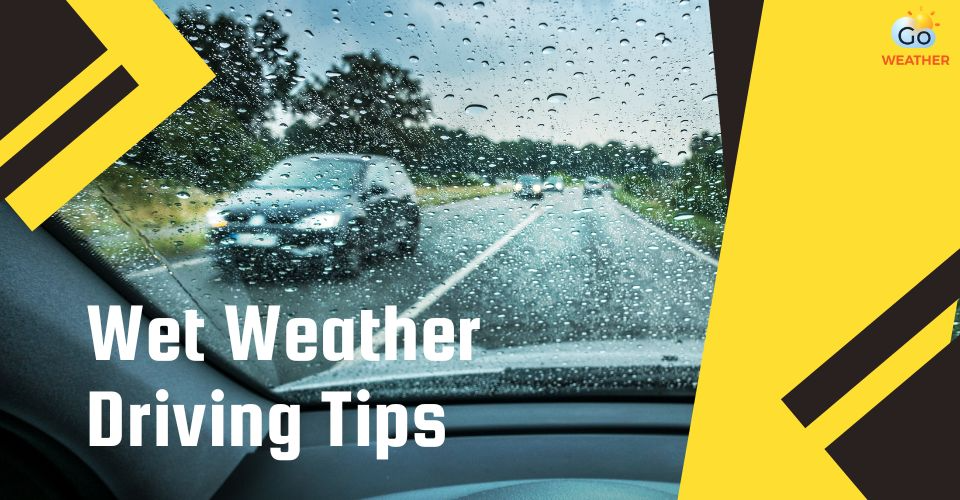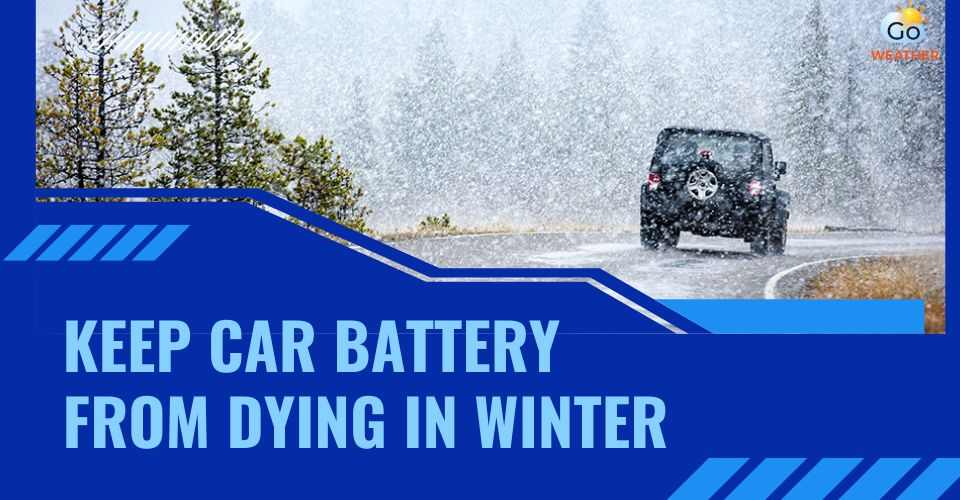10+ Must-Know Tips for Driving on Snow and Ice [Do's and Don'ts]
- How to Prepare Your Car for Winter Driving
- Tips for Driving on Snow and Ice
- Slow down
- Clear your windows and mirrors
- Use your lights
- Look far ahead
- Avoid using cruise control
- Stay at home
- Drive smoothly
- Deal with the skids
- Use your anti-lock brakes effectively
- Keep distance from other vehicles
- Look out for black ice
- Avoid other vehicles' tire tracks
- What to Do After Driving on Snow and Ice
It’s a real challenge for any driver, even for the most experienced ones, when it comes to how to drive on snow and ice roads. But don’t worry, as here are 10+ tips for driving on snow and ice to stay safe during these adverse driving conditions.
.jpg)
Driving tips for snow and ice
How to Prepare Your Car for Winter Driving
When getting ready for winter driving, it's essential to prepare your car ahead of time to ensure safety. This includes performing your vehicle's maintenance before you leave. Among the vehicle preparations to take:
-
Stay up to date with the weather: It is vital to listen to local weather forecasts and traffic reports to know what is likely to happen and have the best preparation before going out.
-
Study your route: This will give you adequate time to reach your destination. Select the route that uses the main roadways in your area as they may be less slippery.
-
Remove snow and ice on your vehicle: In specific states, driving with snow on your car is banned, so check your state's laws and be safe by cleaning off your vehicle before you begin driving.
.jpg)
Advice for driving in snow and ice
-
Prepare an emergency kit: Your survival pack should include basic supplies, safety equipment, auto maintenance tools, and winter gear.
-
Get winter tires: Even the greatest all-season tires cannot match the grip that proper winter tires provide in the snow, ice, and slush.
-
Check the tires: Doing so helps make sure the tread depth does not fall below 3mm and that tires are inflated to the correct tire pressure. Replace tires if necessary.
Tips for Driving on Snow and Ice
With over 150,000 auto crashes caused by ice roads each year, learning what to do when driving in snow and ice is critical.
Continue reading for best tips for driving in the snow and ice conditions.
Slow down
.jpg)
You should drive slowly
This is one of the most important tips for driving in snow and ice.
Driving in cold weather is all about slowing down and leaving plenty of space between vehicles in front and to the side of your vehicle. Bridges and overpasses freeze first.
Therefore, reduce your speed to compensate for inadequate traction. When driving in sleet, ice, or snow, do not press on the accelerator pedal with full throttle.
Clear your windows and mirrors
Weather in winter can reduce your visibility while driving. Thus, you should carry a screen scraper and de-icer. Avoid using hot water on the windscreen to protect the glass from cracking.
De-mist the inside of your windows thoroughly. Make sure your windshield washer system is fine.
Use your lights
.jpg)
Don’t forget to use the lights
Using dipped headlights to let others see you is one of the wet weather driving tips.
Check your headlights and taillights to make sure they are all in working order and clear of snow. Replace new ones if necessary.
Remember to turn the fog light on if visibility drops below 100m, and turn it off as the visibility improves.
Look far ahead
Winter driving tips also suggest you should pay attention to your surroundings and avoid using a phone while driving.
The more slippery it becomes, the further down the road you should look—and think. You should anticipate what you will need to do next. Slow down for corners.
Allow double the stopping distance when the road is wet, triple in snow, and much more on ice. Driving wisely and safely requires considerable focus.
Avoid using cruise control
.jpg)
Avoid using cruise control
If you use cruise control while driving in snow or on ice, the chance of an accident is high. So, make sure to turn the cruise control off while driving in winter conditions for the most safety.
Stay at home
One of the best tips for driving in snow and ice is to stay off the road if possible. It is also a good way to avoid winter season diseases.
Take heed of warnings not to go out. This leaves the emergency services free to deal with real emergencies instead of rounding up stranded motorists.
Drive smoothly
.jpg)
Try to drive smoothly as possible
Smooth steering, acceleration, and braking are essential for safe driving in the snow. The reason is that abrupt movements with the controls readily unstick tires with a weak hold on the slippery road.
Hence, every wheel turn, brake application, and throttle action must be thoughtful, mild, and slow. Pretend you have a cup of scorching coffee in your lap and drive carefully so you don't spill it.
Deal with the skids
Driving on snow can cause your car to slide away from the direction. However, you can manage skids and bring the car back under full control no matter which type of skids.
Make sure you keep your wheels pointed in the direction you want to go and gently use your brakes, ease off the accelerator, and stay off the brakes. When the rear wheels regain traction, turn back in the initial direction.
Use your anti-lock brakes effectively
.jpg)
Use your anti-lock brakes effectively
If you are looking for the best tips for driving on ice and snow, using your car's anti-lock brake system (ABS) should be taken into consideration. This optimizes the car's braking in severe conditions using a computer, especially when you are in a skid.
The computer will adjust the braking force so that you can push the brake pedal down hard while steering around obstacles.
However, note that when ABS systems are activated, the brake pedal will shudder to let you know they're working. This is completely normal, so don't lift off the brakes when you feel this vibration.
Keep distance from other vehicles
On a snowy day, keep an extra following distance from other vehicles on the road to lessen your chances of getting involved in a traffic accident.
To allow yourself the time and space to stop on ice roads if necessary, increase your following distance to at least 7-9 seconds on snowy days.
.jpg)
Keep extra distance from other vehicles
Yet, this distance may rise depending on your vehicle's weight and length, the slope of the road, the quantity of snow on the road, and visibility.
Look out for black ice
The term "black ice" refers to a layer of thin, slippery ice on the road. If the temperatures in your area have varied, keep this in mind.
Snow and ice can thaw throughout the day, but if temperatures fall below freezing in the late afternoon or evening, the melted snow may form a thin coating of ice on the roadway.
This is particularly dangerous because black ice can be difficult to see when driving.
Avoid other vehicles' tire tracks
.jpg)
Avoid other vehicles' tire tracks
Packed snow is more slippery than new snow, so if you're driving during a snowstorm, try to avoid tire tracks from other vehicles.
Tire tracks suggest that the snow is compressed, making it more slippery, therefore drive on new powder whenever feasible.
What to Do After Driving on Snow and Ice
After driving on snow and ice, the most essential thing you can do is properly inspect your vehicle for any damage or possible problems. Follow these tips to keep your car in excellent condition:
.jpg)
Things to check after driving on snow and ice
-
Inspect your tires: Check for signs of damage or wear caused by icy roads. Doing so ensures the tire pressure is within the recommended range, as cold weather can cause it to drop.
-
Check the windshield wipers: Look for any damage to the wiper blades from scraping against ice. Refill your windshield washer fluid, especially if it contains a winter-grade antifreeze solution.
-
Test your brakes: Ensure the brakes are responsive and free of ice buildup. You should also listen for unusual noises that might indicate damage from frozen conditions.
-
Clear off remaining ice and snow: You should remove any leftover ice or snow from your car’s roof, windows, and wheel wells. Doing so prevents melting snow from causing visibility issues or freezing again later.
Conclusion
Years of driving and testing cars (and winter tires) in wintry conditions have taught us that aforementioned tips for driving on snow and ice will greatly improve your chances of arriving at your destination calm, collected, comfortable, and—most important—safe. So, bookmark these and adhere to them for safe driving!








0 Comments
Leave a Comment
Your email address will not be published. Required fields are marked *